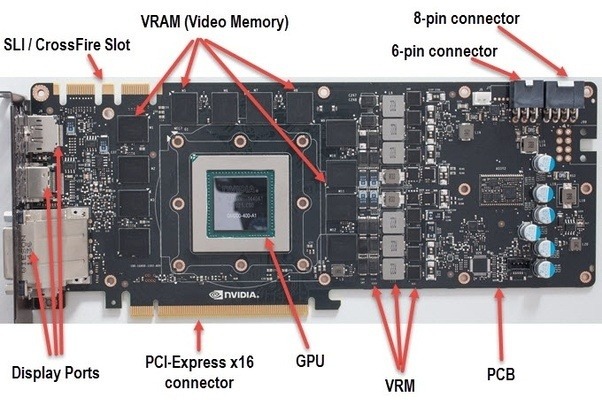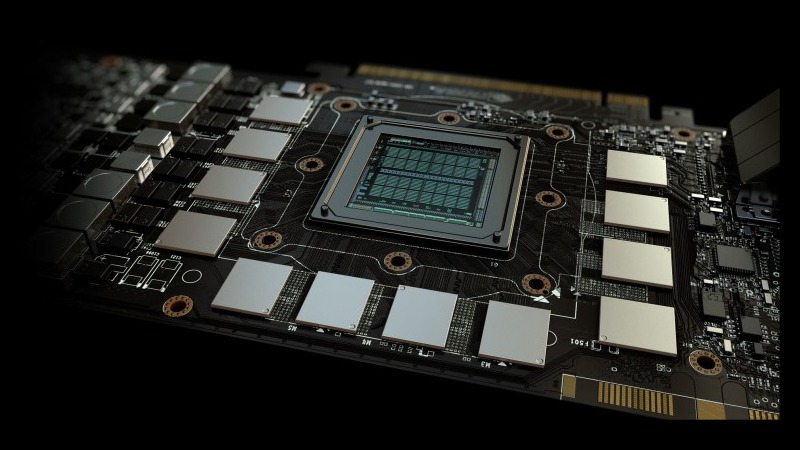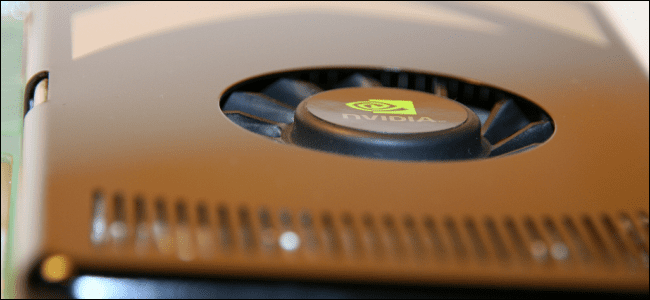Most PC gamers build their computers around the GPU. The graphics processing unit is the heart and soul of any gaming PC. Everything else can take a backseat if necessary, but you should probably get the best GPU you can afford. Sure, there are some great budget graphics cards for gaming, but they won’t be viable in the not-too-distant future.
The GPU is usually the most expensive component of your gaming rig. Is that the gamer’s curse? Why are graphics cards so expensive?

Is it because of manufacturing costs?
Yes and no, but we’ll get to that in a moment. The real reason lies somewhere else. First, let’s talk about what makes a GPU so valuable.
What Is a GPU?
GPUs aren’t that different from CPUs. They are both microprocessors, but each is built for a different purpose. GPUs have the sole purpose of doing specific types of calculations, which include graphics rendering. CPUs are multifunctional processing units and have higher clock speeds (measured in GHz). GPUs have lower clock speeds but a much higher number of cores.

While great gaming CPUs have up to sixteen cores for parallel processes, GPUs have thousands of independent cores. That many cores allow GPUs to complete a massive number of calculations at the same time, which in turn makes them extremely efficient. That makes sense because GPUs need to calculate the state of every pixel on your screen many times per second, therefore completing the whole picture at high FPS.
GPU Manufacturing Costs
The best 1080p gaming monitors require far less GPU strength than the best 4K gaming monitors. If you’re planning to purchase a high-res monitor like that, you should know that gaming is going to be impossible unless you are sporting one of the best graphics cards for gaming out there.
For the above reasons, the type of work they do, and their purpose, GPUs demand a different kind of production and design process.
GPUs also have their own dedicated RAM. You’ve probably heard of the term ‘VRAM’; if not, check out my guide on what is VRAM and then come back here.

Things are about to get real technical.
In order to help the graphics processor be more efficient, its dedicated VRAM synchronizes with the clock speed of the GPU. It’s important to mention that GPUs also come with integrated cooling because they produce high temperatures while under heavy load.
Finally, graphics processing units include billions of transistors in their cores, and that requires state-of-the-art manufacturing and new solutions from the teams of engineers who work on these components. The staggering amount of innovation and engineering that goes into creating a cutting-edge GPU has to come with a certain price.
Sudden Price Growth of GPUs
We can talk all day about the GPUs themselves, but let’s answer the question of why they’re so expensive. You might have noticed that during 2017 and 2018, GPU prices flew sky-high.
Does that mean that GPUs built in those years became many times faster and better than the previous ones?
Maybe the production costs have risen and forced the prices to increase, too?
Absolutely not.
Manufacturing costs are only one part of the price. The actual answer is simpler, but perhaps harder to see in some respects.
Why Are GPUs So Expensive: The Real Answer
The economic laws of supply and demand are what dictate the price of any product on the market. If the manufacturers supply the market with a higher number of GPUs than we want to buy, consequently prices will fall. On the other hand, if customers demand a higher number of GPUs than there are on the market, prices will rise.

So, what happened on the market during 2017 and 2018? Which economic factor or event opened the gates of the gamer’s hell?
Bitcoin Mining
During those two years, the market value of Bitcoin exploded, making digital currency mining a trendy investment. The number of people looking to get their hands on Bitcoins became massive in a short time, thus making it an extremely high-demand product.
The best way for cryptocurrency novices to obtain Bitcoin was through GPU mining.
Mining rigs based on GPUs were a relatively profitable way of acquiring Bitcoins, provided you had the startup cash. This is where GPU’s number of cores makes a difference. A CPU can complete four 32-bit IPCs while using 128-bit SSE instruction, whereas a GPU such as a newer GPU model can complete 3200 32-bit IPCs. This makes GPUs infinitely superior to CPUs in Bitcoin mining.

Also, it is worth mentioning that anyone could create a mining rig, since it is nothing more than a custom-built PC. The GPU shortages and price hikes came about because many people who previously didn’t care about GPUs suddenly wanted to buy them by the truckload. The impact of Bitcoin mining on the GPU market was so severe that even the cheap GPUs under $100 were affected.
Final Words
In a relatively free market, it is a normal thing that something new or revolutionary creates a sudden change in prices. However, laws of supply and demand always work towards the equilibrium. That means that the value of Bitcoin, and consequently the prices of GPUs, should follow a smooth path towards a more bearable and desirable ratio between prices and availability.
For now, building and upgrading a gaming PC will stay somewhat more expensive than it’s been in the past. Depending on your budget, it may be best to wait it out and buy your new GPU when the price becomes more affordable.
There is an excellent third option: GeForce Now Cloud Gaming provides a way to use an old gaming computer to run newer and more demanding games. It manages your gaming library and optimizes your gaming PC for much better performance.
While GPU prices stay high due to manufacturing difficulties and market demand, new solutions could help pass the time. And we will keep praying for the Bitcoin gold rush to end soon.